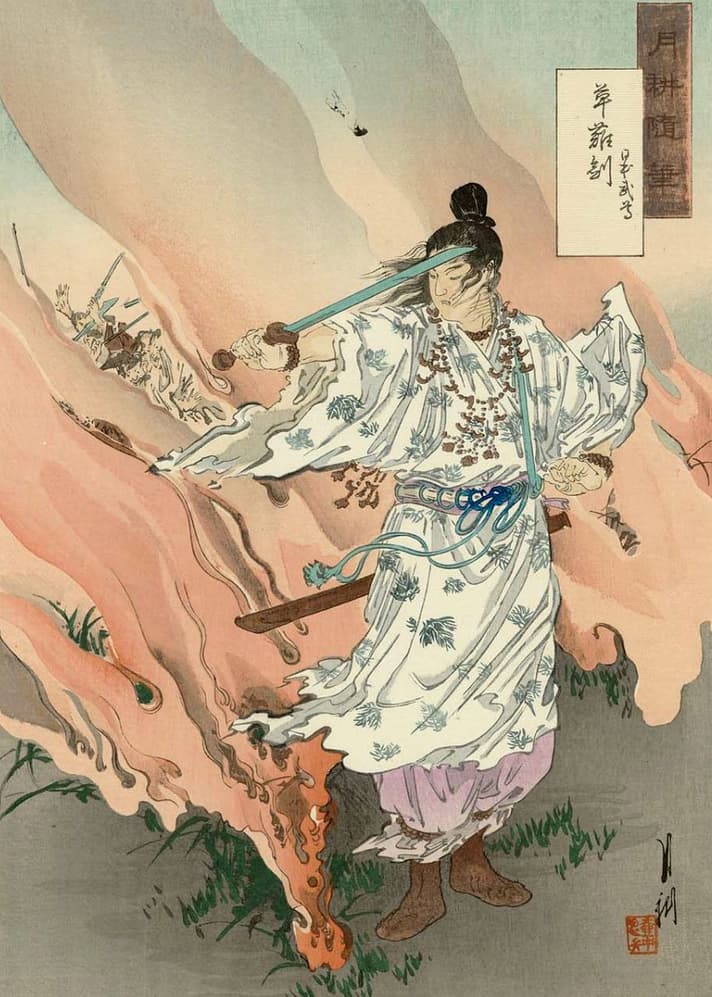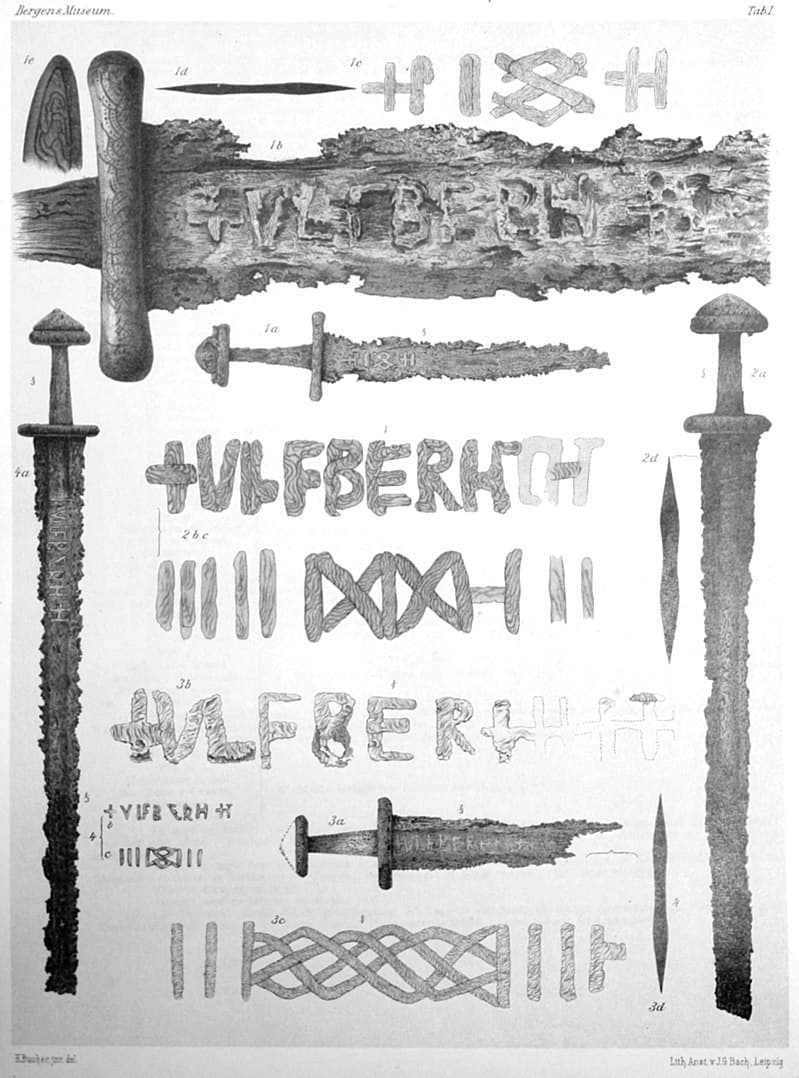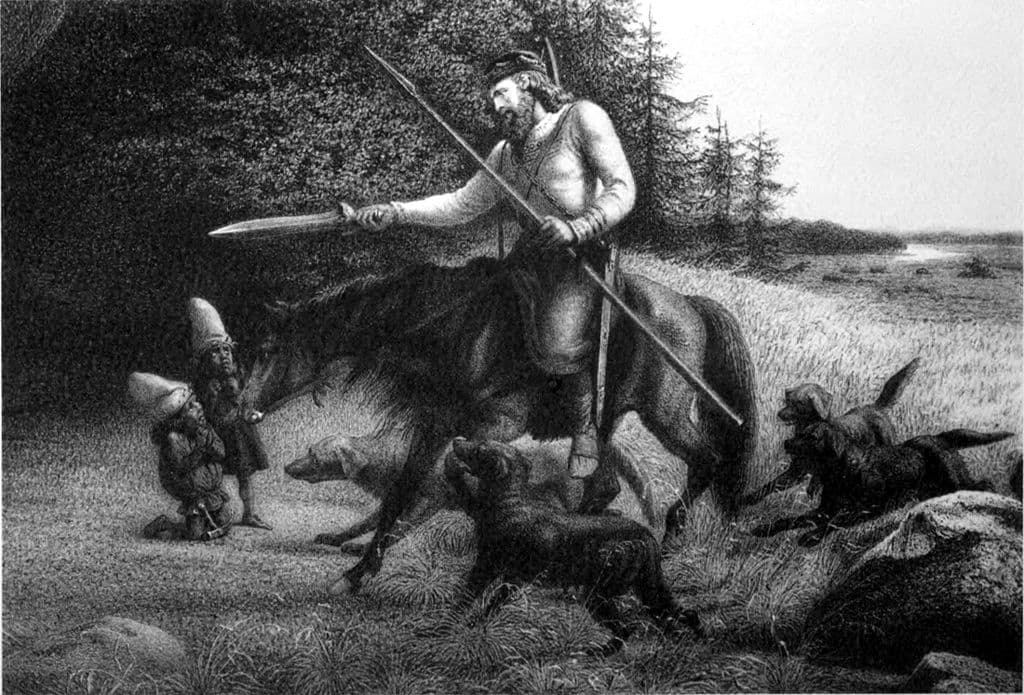Top 5 Legendary Swords from Mythology
Across cultures and centuries, few symbols capture the imagination like the legendary sword. From heroic kings to epic dragon slayers, these blades carry magical powers, unbreakable steel, and stories passed down through generations. Below we explore the five most famous mythic swords, where each tale first appeared, the approximate date of its origin, and how these blades have inspired books, films, and modern fantasy.
Excalibur (Arthurian Legend, c. 1136)
Image: Prop design for Excalibur by Edward Burne-Jones, created for the 1895 stage production of King Arthur.Excalibur is one of the most legendary swords in all of British folklore. It is famously linked to King Arthur, the mythical ruler of Camelot. The sword is said to have magical powers and to symbolize rightful kingship. Though different versions of the story exist, Excalibur is always portrayed as a weapon of great importance and strength, fit only for a true and noble ruler.
The first known mention of Excalibur comes from the 12th-century writer Geoffrey of Monmouth in his work Historia Regum Britanniae, where the sword is called “Caliburn.” Over time, the story evolved, and new legends formed around how Arthur came to possess it. In one version, he pulls the sword from a stone, proving his right to rule. In another, the sword is given to him by a mystical figure known as the Lady of the Lake, rising from the waters to present him with the enchanted blade.
Excalibur was more than just a powerful sword, it represented King Arthur's right to rule. In some versions of the legend, the sword could cut through anything, and whoever held it was unbeatable in battle. But Excalibur's power didn't stop there. The sword came with a special case, called a scabbard, which Arthur wore at his side. This magical scabbard protected him from harm. In fact, some stories say the scabbard was even more valuable than the sword itself, because as long as Arthur wore it, he wouldn't bleed, even if he was wounded in a fight.
The legend of Excalibur has inspired countless retellings in literature and film. It plays a central role in Sir Thomas Malory's Le Morte d'Arthur (1485), a major source of the Arthurian legends we know today. Later, it was reimagined in T.H. White's classic novel The Once and Future King, and it continues to be used in modern stories and movies.
Kusanagi-no-Tsurugi (Japanese Myth, c. 712)
Image: 1887 woodblock print by Ogata Gekkô depicting the legendary Prince Yamato Takeru wielding the sacred sword Kusanagi no Tsurugi.Kusanagi-no-Tsurugi, often called the “Grass-Cutting Sword,” is one of the most legendary weapons in Japanese mythology. It appears in Japan's oldest written records, the Kojiki (712 AD) and the Nihon Shoki (720 AD), both of which compile the myths, history, and folklore of early Japan. Though its name has changed over time, Kusanagi has always been more than just a weapon, it is a symbol of divine power and royal authority.
According to the myth, the sword was discovered by the storm god Susanoo after he defeated a fearsome eight-headed serpent named Yamata-no-Orochi. When he cut open the monster's tail, he found a brilliant blade hidden inside. Recognizing its power, Susanoo offered the sword to his sister, the sun goddess Amaterasu, as a gesture of peace and respect. Eventually, the sword was given to a legendary warrior prince named Yamato Takeru, who used it to escape a deadly trap by cutting through burning grass, earning the sword its famous nickname.
Kusanagi is one of the Three Imperial Regalia of Japan, alongside a mirror and a jewel. These sacred treasures are said to represent the virtues of the Japanese emperor: wisdom, benevolence, and valor. Although the sword is kept hidden and rarely seen by the public, it remains an important symbol of the emperor's divine right to rule, connecting Japan's modern monarchy to its mythic origins.
Durandal (Frankish Legend, c. 1100)
Image: The sword of Durandal embedded in the cliff face at Rocamadour, where legend says Roland hurled it with the help of the Archangel Michael. The most recent replica was reported stolen in June 2024.Durandal is the legendary sword of Roland, a heroic knight and the nephew of Charlemagne, the great king of the Franks. The tale of Durandal comes from the epic poem La Chanson de Roland ("The Song of Roland"), written around the year 1100. This poem is one of the oldest and most famous pieces of French literature, telling the story of Roland's bravery, loyalty, and tragic end during the Battle of Roncevaux Pass.
According to legend, Durandal was no ordinary weapon. It was said to be forged by divine or celestial beings and blessed with unmatched power. Its hilt was believed to contain sacred Christian relics, including a tooth of Saint Peter, blood from Saint Basil, hair from Saint Denis, and a piece of the Virgin Mary's robe. These relics were meant to make the sword both holy and indestructible, a symbol of divine strength given to a true Christian warrior.
In the epic, Roland faces overwhelming enemies at Roncevaux. Refusing to retreat he fights valiantly with Durandal by his side. When he realizes defeat is inevitable, he tries to destroy the sword to prevent it from falling into enemy hands. But Durandal is so strong that even Roland cannot break it. Instead, with his last breath, he hides the sword beneath his body, hoping to keep it safe from the Saracens.
But in another version of the legend, the story ends differently. Instead of hiding Durandal, Roland is said to have called on the Archangel Michael for help and threw the sword with all his strength to keep it from being captured. According to this tale, the sword flew through the air and landed hundreds of kilometers away, where it became lodged in a cliff at Rocamadour, a small town in southern France.
Gram (Norse Myth, c. 13th century)
Image: 19th-century illustration of Ulfberht swords found in Norway, drawn by Anders Lorange (1889). These Viking swords reflect the kind of craftsmanship that may have inspired the legendary Norse sword Gram.In ancient Norse mythology, one of the most legendary weapons is the sword known as Gram. This powerful blade appears in the “Volsunga Saga,” written around 1270, and also in the older poems of the “Poetic Edda.” Gram is most famous for being the sword used by the hero Sigurd to slay the mighty dragon Fafnir, a central moment in Norse heroic tales. But Gram's story begins long before that epic battle, full of magic, tragedy, and destiny.
The sword first belonged to Sigurd's father, Sigmund, a great warrior in his own right. During a fierce battle, Gram was shattered into pieces, leaving Sigmund mortally wounded. Years later, Sigmund's son Sigurd set out to fulfill his own heroic fate. Under the guidance of the cunning smith Regin, who was secretly Fafnir's brother, Sigurd had Gram reforged from the broken shards. Once restored, the blade was said to be so sharp it could slice through an anvil with ease.
With Gram in hand, Sigurd faced the dragon Fafnir, who had been transformed into a monstrous serpent after guarding a cursed treasure hoard. Using both bravery and cleverness, Sigurd killed the beast, marking one of the greatest dragon-slaying tales in mythological history.
Tyrfing (Norse Myth, c. 13th century)
Image: 20th-century depiction of King Svafrlami securing the cursed sword Tyrfing, a legendary moment in Norse mythology.The sword Tyrfing is one of the most chilling artifacts of Norse legend, forged long ago by the dwarven smiths Dvalin and Durin. According to the medieval “Hervarar Saga,” these master craftsmen imbued the blade with unmatched skill, and a terrible curse. The moment Tyrfing was drawn from its scabbard, it would claim a life, dooming its bearer and anyone close by to a violent fate.
From the very first battle, Tyrfing's thirst for bloodmarched its owners toward betrayal and sorrow. Each time the sword tasted flesh, it grew hungrier, demanding fresh victims. Fathers turned on sons, brothers on brothers, and the proudest warriors found their hearts twisted by its malevolent will. Heroes like Angantyr and Heidrek are forever remembered not for triumph, but for the tragedies that followed wherever Tyrfing went.
Across generations, the cursed sword wove itself into family feuds and legendary sagas. No ritual could cleanse its wickedness, and no hero could master its power without paying in grief. It stood as a stark reminder: gifts from the dwarves were never simple tools, but bargains steeped in magic and risk. Tyrfing was not merely a weapon, it was a living force of calamity, driven by a darkness that even its creators could not undo.




